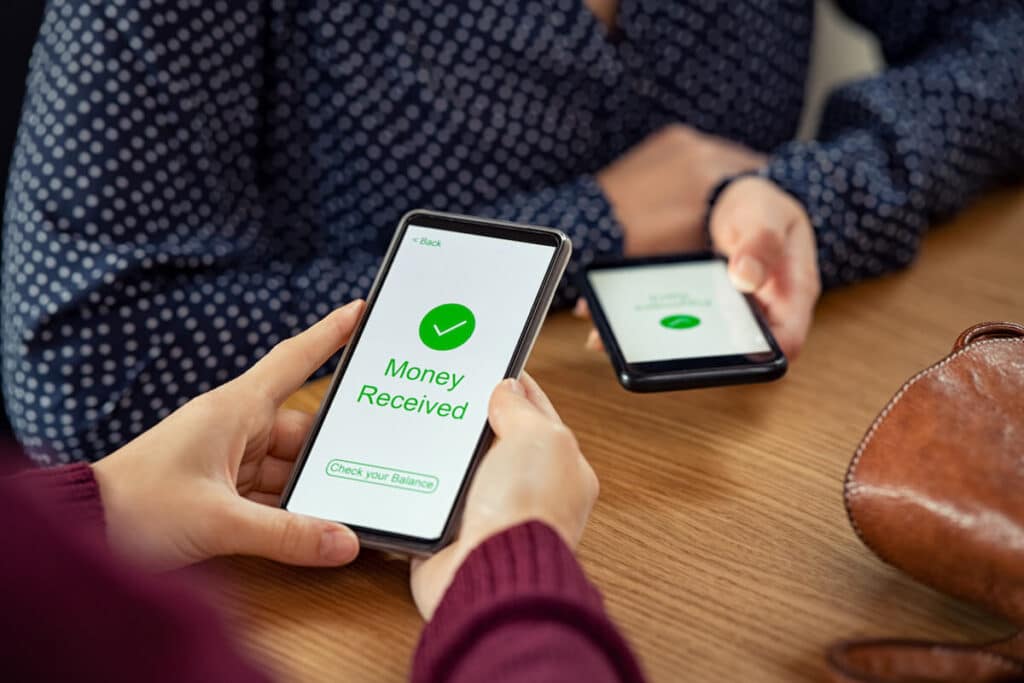Last updated on September 14th, 2023 at 02:02 pm
A wire transfer is an easy way to send money electronically. You can wire money from one bank account to another in the same country or from one country to another.
Bank wire transfers are popular as they are easy to initiate and tend to be secure.
You can wire money via an online banking app, over the phone, or with an in-person visit to your bank or other financial institution offering wire transfer services.
Ready to get started? This article will explain how to receive a wire transfer, the bank information you need for money transfer services, and how Remitly can help you easily send money.
How to receive a wire transfer

There are four main steps for how to receive a wire transfer—whether domestically or internationally.
Step 1: Decide with the sender which wire transfer service you will use.
As we discussed earlier, there are various ways to wire money, including online banking, in-person financial institutions, or online money transfer companies Remitly.
Step 2: Provide the beneficiary account details to the sender.
The next step is to provide the sender with information about the receiving bank, including your bank account number or IBAN, routing number (for domestic transfers), SWIFT code (for international transfers), and any other required information.
Step 3: Keep track of the incoming wire.
Once the sender has initiated the funds transfer, it can take a few business days for the incoming money to arrive in your bank account. The exact timeline can vary based on factors including the sender’s bank, your bank, and the type of wire transfer service used.
You can check with your bank or online money transfer company to see how long the wire transfer will take. Some services, like Remitly, will make it easy to track.
Step 4: Verify the payment.
The wire transfer service will let you know when funds reach the recipient’s bank account. At that point, double check with your recipient to ensure they have received the correct transfer amount.
What is a wire transfer?
A wire transfer is a type of electronic bank transfer where you can send and receive money from one bank account to another through a secure online network. It is a reliable and fast way to send and receive money across different banks without needing to use cash.
How much do wire transfers cost?
Bank wire transfers are usually not free. Wire transfer fees vary based on factors including the sender’s bank, the recipient’s bank, the wire transfer service used, and the amount of the transfer.
Depending on the service you use, both you and the sender may have to pay a fee. In other cases, you, as the recipient, may not incur any wire transfer fees.
If your funds transfer goes to another country, the wire transfer service will give you an exchange rate based on the current market rates. This can vary based on your transfer amount, as some financial institutions may offer a more favorable rate for a large transaction.
What information do you need to receive a wire transfer?

Whether you use online banking or offline wire transfer services, keep the following information handy to share with your sender.
Always check the wire instructions for a particular transfer service to see if additional information is required.
Receiving domestic wire transfers
For domestic wire transfers in the U.S., you’ll need to provide your bank account information to the person wiring you money. That’s because the wire transfer service will ask for the recipient’s bank account details (also known as the beneficiary bank account).
The following is usually required information:
- Bank name
- Account type (whether it’s a savings account or checking account)
- Bank account number
- ABA routing number
Also provide your full name as it appears on the bank account, your address, and your phone number.
International wire transfers
You’ll need to provide similar information when receiving a wire transfer from overseas.
Give the sender your full name as it appears on the bank account, your address, and your phone number. In addition, the sender will need your bank information.
For international bank accounts, this might mean providing your International Bank Account Number (IBAN) and your SWIFT/BIC number, which is the Society for Worldwide Interbank Financial Telecommunication (SWIFT) code or the Bank Identifier Code (BIC).
3 tips to help you avoid scams when receiving a wire transfer
Receiving wire transfers requires you to share your private information and bank details with the sender. Here are some safety tips to help you avoid potential scams:
- Do not give out your bank account information to people you don’t know, or over phone numbers you do not recognize and can’t verify.
- Do not click on unknown links or fill out forms on unauthorized websites.
- Pay wire transfer fees, exchange rates, and other expenses directly to the wire transfer service you’re using. Do not send this amount to the sender’s bank account.
Sending money with Remitly
Visit the homepage, download our app, or check out our Help Center to get started.
